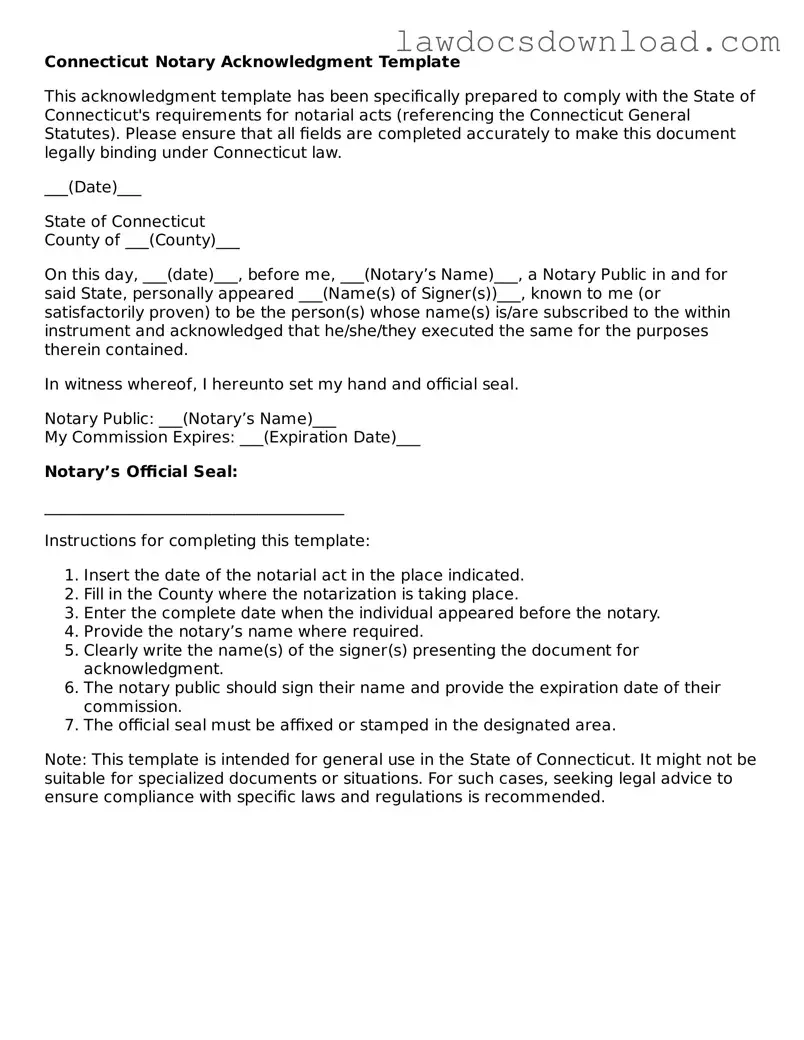Filling out the Connecticut Notary Acknowledgement form might seem straightforward, but many people stumble over common pitfalls. One frequent mistake is not reviewing the entire document before beginning the process. This oversight can lead to missed instructions or specific sections, crucial for the notarization process to be valid and legally binding.
Another common error is incorrect personal information. Misspelled names, wrong dates, and inaccurate details not only cast doubt on the document's legitimacy but might also necessitate a complete redo of the notarization process. The accuracy of each piece of information is paramount to ensure the document’s accepted by all parties involved.
People often forget to sign in the presence of the notary. Signatures are the heart of the notarization process, binding individuals to the statements within the document. A signature made outside the notary’s presence is a significant mishap, leading to the notarization’s invalidation.
Using the wrong notarization form is another mistake that is encountered frequently. Connecticut, like many states, has specific forms for different purposes. Choosing the incorrect form can nullify the process, requiring individuals to start over with the correct documentation.
Leaving sections blank is yet another error that can cause issues. Every section of the Connecticut Notary Acknowledgement form is designed for specific, necessary information. Unfilled sections can render the document incomplete in the eyes of the law, leading to potential legal challenges down the line.
There’s also a common mistake where individuals fail to bring proper identification to the notarization appointment. Notaries must verify the identity of the person signing the document, and lack of appropriate ID can stop the process in its tracks. It’s essential to bring government-issued identification to ensure the process goes smoothly.
Some might overlook the need for witnesses, depending on the document being notarized. Many legal documents require witness signatures in addition to the notarization. Overlooking this requirement can necessitate another visit to the notary, delaying the entire process.
Another issue arises when individuals do not understand the document they are signing. Notaries can ensure the signatory is aware of the document's nature and purpose but cannot provide legal advice or explain its contents in detail. Misunderstandings can lead to complications in the future, especially if the document does not serve its intended purpose or has unintended legal consequences.
Finally, a subtle yet impactful mistake is using incorrect or outdated notary language. Laws and requirements can change, and using an outdated format or language in the acknowledgment section can invalidate the process. Staying updated on the latest notary requirements is crucial for a valid and enforceable document.
While filling out the Connecticut Notary Acknowledgement form might seem to be a daunting task, paying attention to these common mistakes can help ensure the process is completed correctly and efficiently. This attention to detail can save time, money, and prevent legal headaches in the future.
